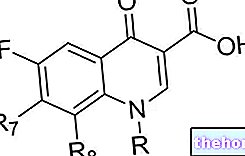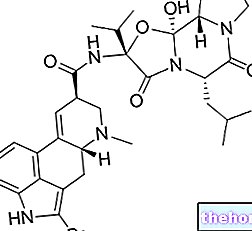AZITROCIN ® is an Azithromycin-based drug
THERAPEUTIC GROUP: Antibacterials - antibacterials for systemic use, macrolides

Indications AZITROCIN ® Azithromycin
AZITROCIN ® is indicated in the treatment of infections caused by microorganisms sensitive to azithromycin.
Respiratory tract infections, odontostomatological infections, skin and soft tissue infections and gynecological infections represent the main therapeutic applications envisaged for azithromycin.
Mechanism of action AZITROCIN ® Azithromycin
Azithromycin, an active ingredient belonging to the category of macrolides with 15 carbon atoms, is an antibiotic active against both Gram positive and Gram negative cocci and bacilli, with high activity especially against Gram negative aerobic bacteria such as Haemophilus influenzae and parainfluenzae .
The therapeutic activity, similarly to that carried out by the progenitor of the category of macrolides, that is "Erythromycin, is carried out through the inhibition of protein synthesis exerted by binding to the 50S ribosomal subunit, which prevents the peptidyltransferase enzyme from providing "elongation of the nascent polypeptide chain.
Particularly important are the pharmacokinetic characteristics which give this antibiotic a high stability in the gastric environment, with a plasma peak time of 2-3 hours and with a wide tissue distribution throughout the organism.
Upon termination of its activity following a particularly long half-life, essentially linked to the accumulation of this drug in the tissues, Azithromycin is eliminated in the form of catabolites mainly through the bile.
Studies carried out and clinical efficacy
1. AZITHROMYCIN AND CYTOKININE PROFILE IN UROGENITAL INFECTIONS
Antibiot Khimioter. 2012; 57 (3-4): 29-32.
Efficacy of azithromycin and its impact on cytokine system in urogenital infections.
Khrianin AA, Reshetnikov OV, Safronov ID, Trunov AN, Kulikova NB.
Study that demonstrates how the treatment of urogenital infections due to Chlamydine and Mycoplasma can be effective in the eradication of the microorganism, also ensuring a modulation of the pattern of cytokines expressed, with a reduction in the levels of IL-1 and IL-6 against an increase of IFN-Gamma concentrations
2 . NEISSERIA RESISTANT TO AZITHROMYCIN
Sex Transm Dis. 2012 Nov; 39: 877-9.
Emergence of Increased Azithromycin Resistance During Unsuccessful Treatment of Neisseria gonorrhoeae Infection With Azithromycin (Portland, OR, 2011).
Soge OO, Harger D, Schafer S, Toevs K, Raisler KA, Venator K, Holmes KK, Kirkcaldy RD.
Work that describes the emergency linked to the spread of Neisseria Gonorrhoeae strains resistant to the common therapy with Azithromycin. This could result in a strong limitation in the efficacy of antibiotic therapy, therefore requiring an adaptation of the guidelines currently present in the US territory.
3. AZITHROMYCIN AND BONE REMOVAL
J Cell Physiol. 2012 Oct 12.
Azithromycin suppresses human osteoclast formation and activity in vitro.
Gannon S, Cantley M, Haynes D, Hirsch R, Bartold P.
Interesting experimental study that demonstrates how Azithromycin can reduce the in vitro activity of osteoclasts, thus making it useful as an adjuvant therapy in the treatment of periodontitis.
Method of use and dosage
AZITROCIN ®
500 mg coated tablets of Azithromycin;
Azithromycin 200mg powder for oral suspension per 5ml dose.
In most cases, the daily intake of 500-1000 mg of Azithromycin is sufficient to control bacterial proliferation in just 3 days of treatment.
On the other hand, an adjustment of the doses should be envisaged in the case of elderly patients or patients suffering from hepatic diseases.
Use in children should instead be defined and supervised by a specialist doctor.
Warnings AZITROCIN ® Azithromycin
Before starting the therapy with AZITROCIN ® it is necessary to consult your doctor with whom to evaluate the possible presence of conditions incompatible with the therapy based on Azithromycin, rather than the need to adjust the dosage.
It is recommended to follow the medical indications, avoiding the prolonged use of this product which is responsible not only for alterations in cardiac activity but also for fungal and bacterial superinfections, often the cause of significant gastrointestinal disturbances.
AZITROCIN ® in tablets contains glucose and lactose, thus also being contraindicated for patients with diabetes, lactase enzyme deficiency, lactose intolerance and glucose / galactose malabsorption syndrome.
PREGNANCY AND BREASTFEEDING
Given the presence of studies that show how Azithromycin can easily permeate the placental barrier, even if it does not manifest sensitive toxic actions on the fetus, it would be advisable to limit the use of this antibiotic during pregnancy.
These limitations should also be extended to the subsequent period of breastfeeding, given the ability of Azithromycin to be excreted in significant quantities in breast milk.
Interactions
Although Azithromycin does not undergo intense hepatic metabolism nor does it alter the functionality of cytochromial enzymes, particular attention must be paid to the simultaneous intake of drugs such as oral anticoagulants, cyclosporine, digoxin and cardioactive active ingredients.
Contraindications AZITROCIN ® Azithromycin
The use of AZITROCIN ® is contraindicated during pregnancy and lactation, in cases of severe hepatic insufficiency and in patients hypersensitive to the active substance or to one of its excipients.
Undesirable Effects - Side Effects
Azithromycin therapy exposes the patient to the same side effects as macrolide therapy.
Among the most frequently observed side effects are: nausea, diarrhea, vomiting, abdominal pain, impaired liver function, asthenia, headache and only rarely thrombocytopenia, convulsions, irritability, cardiological changes and allergic reactions.
Prolonged therapy over time, on the other hand, could lead to superinfections from resistant microorganisms such as Clostridium difficile, responsible for persistent diarrhea from pseudomembranous colitis.
Note
AZITROCIN ® is a drug subject to mandatory medical prescription.
The information on AZITROCIN ® Azithromycin published on this page may be out of date or incomplete. For a correct use of this information, see the Disclaimer and useful information page.




























